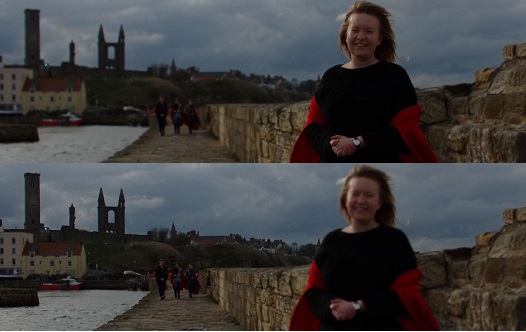New 3D experience created at St Andrews

A new way of experiencing 3D, which could revolutionise the way we look at images, has been created by researchers at the University of St Andrews.
The new technique allows the viewer to focus in and out of different areas in a photograph using eye-tracking software.
Using a depth-of-field camera to take the initial images, the research team found a way to use eye-tracking technology which, once calibrated to an individual viewer, will follow their gaze and focus in on the specific part of the photograph at which the person is looking.
The system creates a more realistic way of looking in the third dimension as it replicates the way we look in reality – instead of the viewers eyes adapting to what they are being shown, with this system, the viewer changes the image with their gaze.
Michael Mauderer, Researcher in the School of Computer Science at the University of St Andrews, said: “Right now we can provide 3D by wearing glasses which provide a different image for each eye, however some people simply cannot perceive 3D in this way and others report a feeling of sickness.
“This is an alternative way of make a more natural-feeling 3D effect.”
Similar effects exist in computer gaming, however, this is the first time the effect has been created using real photographic images. The technique could also be combined with existing 3D technology.
The system is limited to individual viewers, most likely people using computer screens, rather than television as screens are unable to show different views to different people watching at the same time.
Entertainment is expected to be the main use for the technique which could potentially revolutionise the way we view images.
Notes to news editors
Issued by the University of St Andrews Communications Office, contactable on 01334 462530 or [email protected].
Category Research